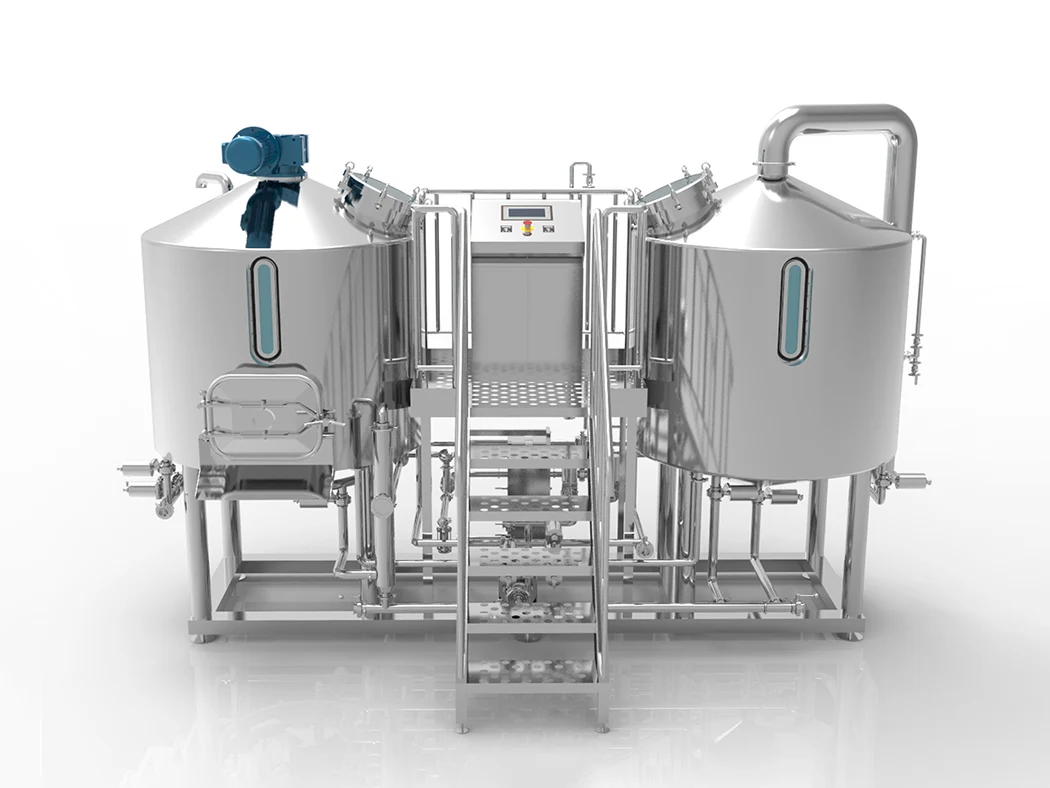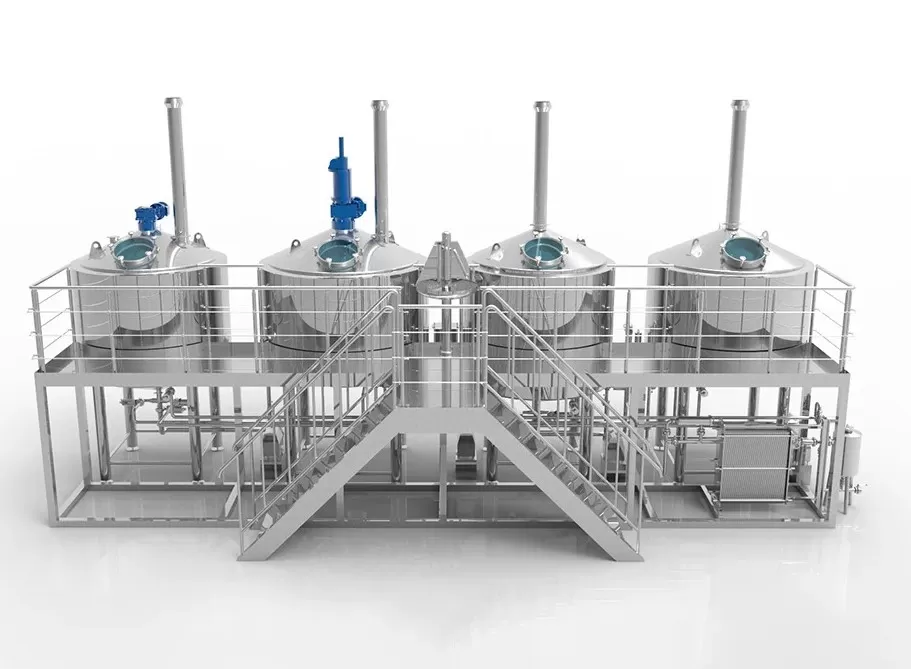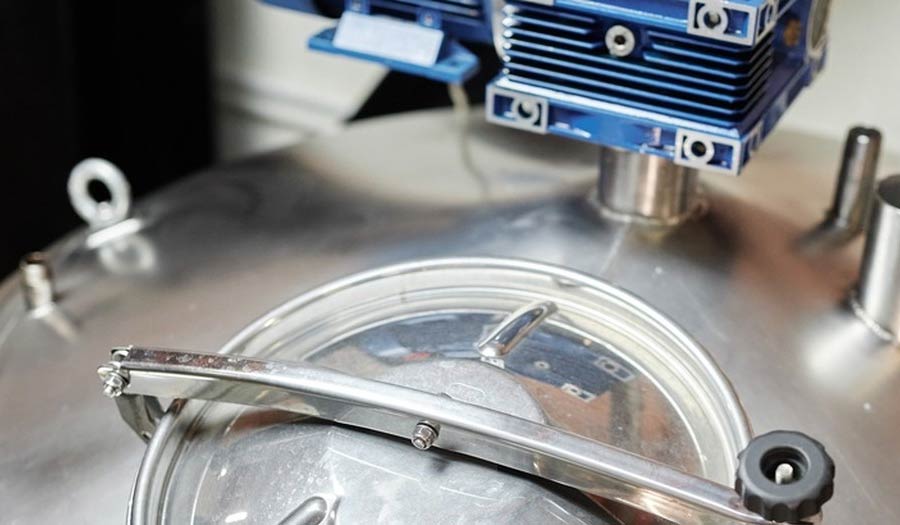In today’s rapidly developing food processing industry, the intelligent upgrading of production equipment has become an irreversible trend. In the past, the stirring process on food production lines relied heavily on manual labor or simple mechanical devices. However, with the widespread adoption of automation and digital technologies, Mischtanks aus rostfreiem Stahl have evolved from traditional manual stirring devices into intelligent mixing systems that integrate sensing, control, monitoring, and optimization. The emergence of intelligent mixing systems has shifted food production from being “experience-driven” to “data-driven,” significantly improving product consistency, safety, and production efficiency.
From Manual Stirring to Mechanized Mixing: The Starting Point of Food Equipment
In the early days of food processing, operations relied primarily on manual labor. In the production of sauces, dairy products, beverages, and other foods, workers used handheld tools to stir or mix ingredients. Although this method offered flexibility, it had several obvious drawbacks:
- Stirring was often uneven, resulting in inconsistent product quality;
- High labor intensity led to low production efficiency;
- Hygiene was difficult to maintain, increasing the risk of contamination;
- Temperature, speed, and time could not be precisely controlled.
As industrialization accelerated, mechanized mixing equipment gradually replaced manual operations. Stainless steel Mischbehälter became standard equipment in food processing enterprises. Their main functions include raw material mixing, dissolution, homogenization, heating, cooling, and storage. Mechanized mixing not only improved efficiency but also enabled food production to move toward standardization and large-scale operations.
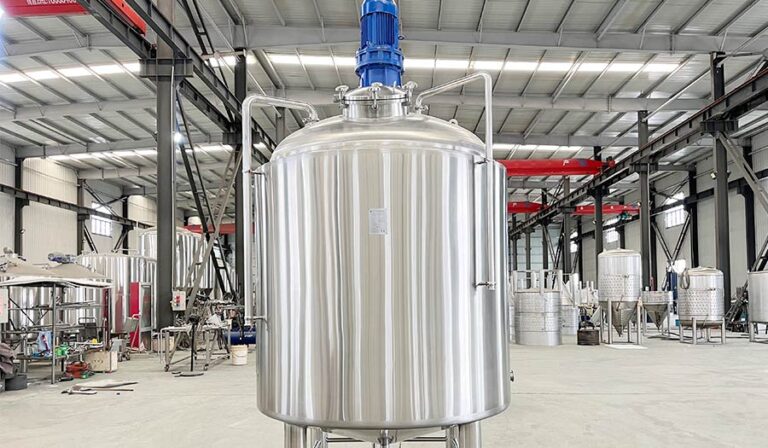
From Mechanization to Automation: The Technological Evolution of Stainless Steel Mixing Tanks
Mechanization was only the first step; automation represents the core direction of modern food equipment. Entering the 21st century, with the maturation of control systems and sensor technologies, automated stainless steel mixing tanks have become the industry standard.
These systems utilize technologies such as PLC (Programmable Logic Controllers), variable frequency drives, temperature sensors, and pressure monitoring to achieve precise control over stirring speed, temperature, and time.
The three main characteristics of automated mixing systems are:
- Precise Control: Stirring speed, time, and temperature can be set accurately, ensuring consistent product quality.
- Traceable Processes: All operational data is automatically recorded, facilitating food safety traceability.
- Energy Efficiency and Productivity Improvement: Optimizing motor load and heating system control reduces energy consumption while increasing production efficiency.
For example, in dairy production, an automated temperature-controlled stainless steel mixing tank can maintain uniform stirring at a set temperature, preventing protein denaturation or nutrient loss, and significantly improving product consistency and quality.
The Arrival of the Intelligent Era: Mixing Systems Enter the "Data-Driven" Stage
Intelligent Sensing and Automatic Adjustment
In the context of intelligent manufacturing, stainless steel mixing tanks are no longer just mechanical devices that execute stirring—they have become smart units capable of “perceiving” production conditions. Equipped with built-in sensors for temperature, pressure, liquid level, and viscosity, these systems can monitor material changes in real time and automatically adjust stirring speed and direction, ensuring more uniform, energy-efficient, and effective mixing.
Data Collection and Remote Monitoring
Intelligent mixing systems can automatically record process parameters, operating time, and energy consumption for each batch. This data can be accessed through control systems or mobile devices, allowing managers to monitor equipment status at any time and achieve visualization and traceability of the production process.
Production Optimization and Predictive Maintenance
Through data analysis, the system can identify operational patterns, optimize mixing parameters, and reduce manual intervention. When abnormal trends occur, the system can issue early warnings to minimize downtime. Intelligent technology transforms stainless steel mixing tanks from “passive executors” into “active optimizers,” driving food production into a truly data-driven era.
Core Technologies of Intelligent Stainless Steel Mixing Tanks
- PLC + HMI: Serving as the “brain” of the intelligent mixing tank, the PLC and HMI handle signal acquisition, logic processing, and execution control. For example, if a temperature sensor detects a deviation, the PLC automatically adjusts the heating system to maintain a constant temperature.
- Optimized Mixing System Design: Intelligent mixing tanks often use multi-stage agitator designs (such as anchor + paddle) that can automatically switch based on different processes. Some models are equipped with variable frequency drives to enable flexible and precise mixing.
- Data Acquisition and Communication Modules: These tanks communicate with higher-level systems via protocols such as MODBUS, PROFINET, or MQTT, allowing seamless data exchange with ERP or MES systems.
- CIP/SIP Systems: Most intelligent mixing tanks are equipped with automatic cleaning-in-place (CIP) and steam-in-place (SIP) sterilization systems to ensure food-grade hygiene standards.
- Cloud Platforms and Big Data Analysis: Production data can be uploaded to enterprise cloud platforms for analyzing energy consumption, equipment health, and production fluctuations, providing valuable insights for operational decision-making.
Application Scenarios: How Intelligent Mixing Systems Transform Food Production
Dairy Industry: Precise Temperature Control and Consistent Texture
In dairy processing, temperature and stirring speed have a significant impact on product texture. Intelligent stainless steel mixing tanks can automatically adjust heating and stirring intensity according to process curves, ensuring uniform mixing of milk, yogurt, and other products at a constant temperature, while preventing protein separation or nutrient loss.
Beverage Industry: Automated Ingredient Dosing and Homogeneous Mixing
Beverage production often involves controlling the ratios of syrup, water, flavorings, and other ingredients. Intelligent mixing systems can automatically read formula data, dispense ingredients in precise proportions, and mix them thoroughly, ensuring consistent flavor in every batch and reducing manual errors.
Seasoning Industry: Handling High-Viscosity Materials
High-viscosity materials such as soy sauce or chili paste are difficult to mix using traditional methods. Intelligent mixing tanks can monitor stirring load in real time and automatically adjust speed and torque, ensuring thorough mixing, avoiding clumping or dead zones, and improving product smoothness.
Biopharmaceutical and Fermentation Sector: Precise Environmental Control
In fermentation or pharmaceutical processes, intelligent mixing systems can comprehensively control key parameters such as temperature, pH, and dissolved oxygen. This helps maintain microbial activity, significantly improving fermentation efficiency and product quality.
Industry Development Drivers
Increasing Food Safety Standards
National and international requirements for food safety are becoming increasingly stringent, emphasizing hygiene, traceability, and consistency throughout the production process. Intelligent Mischtanks aus rostfreiem Stahl ensure that every stage can be monitored and verified through automatic control and data recording, providing technical support for compliance with food safety systems such as HACCP and ISO22000.
Labor Costs and Efficiency Pressure
As labor costs rise and production scales expand, traditional manual or semi-automatic operations can no longer meet the demand for high-efficiency production. Intelligent mixing systems enable automated operation and remote monitoring, reducing manual intervention and increasing equipment utilization.
Digitalization and Smart Manufacturing Policies
Governments are actively promoting strategies such as “Digital Factories” and “Smart Manufacturing 2025,” driving the food equipment industry toward automation and informatization. Intelligent stainless steel mixing tanks can integrate with MES and ERP systems, becoming key components of digitalized production lines.
Energy Saving, Environmental Protection, and Green Production
Intelligent control systems can precisely regulate energy consumption and optimize operating schedules, significantly reducing electricity and thermal energy usage. This aligns with green production and carbon neutrality goals.
Together, these factors are accelerating the transformation of the food equipment industry from traditional mechanization to intelligent systems, making stainless steel mixing tanks a critical component for the future upgrade of food factories.
Reasons to Choose Stainless Steel Mixing Tanks
Compliance with Food-Grade Hygiene Standards
In food processing, the material of the equipment directly affects product safety. Stainless steel mixing tanks offer excellent corrosion resistance and chemical stability, preventing reactions with food components and minimizing secondary contamination, fully meeting food-grade hygiene requirements.
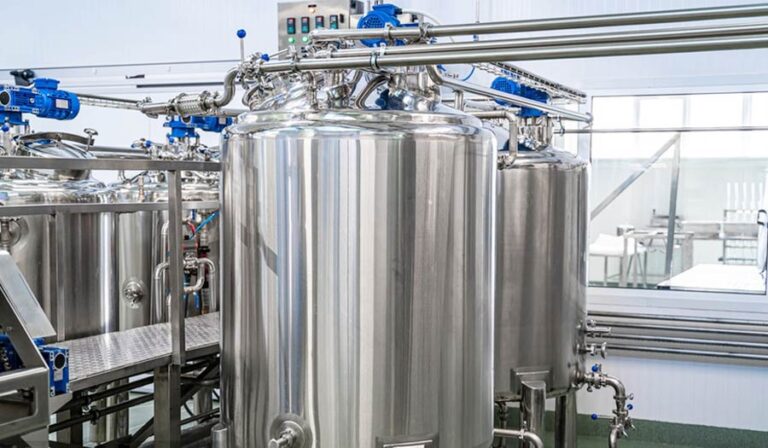
Durability and Low Maintenance Costs
Stainless steel is highly durable and wear-resistant, with a lifespan far exceeding that of ordinary carbon steel or enamel tanks. Even under high temperature, high humidity, or acidic/alkaline conditions, it maintains stable performance, reducing the frequency of equipment replacement and maintenance costs.
Easy Cleaning and Support for Automated CIP Systems
The smooth surface of stainless steel prevents residue buildup, making it easy to clean and sterilize. Modern mixing tanks are often equipped with CIP (Clean-in-Place) systems, enabling automated cleaning and sterilization, improving production efficiency and hygiene.
Wide Applicability and Compatibility with Various Processes
Whether for dairy products, beverages, sauces, or fermentation products, stainless steel mixing tanks can perform heating, cooling, vacuum, or pressurized mixing according to different process requirements, offering high adaptability and customization.
Integration with Intelligent Control Systems
The stable structure and excellent sealing of stainless steel tanks make it easy to install sensors and control modules. This allows seamless integration into automated and intelligent production systems, providing a solid foundation for enterprise digital transformation.
Schlussfolgerung
For food production enterprises, intelligent mixing systems are not only a means to improve efficiency but also a crucial foundation for ensuring food safety and achieving digital transformation. In the future, with the deeper application of artificial intelligence, the Internet of Things, and big data technologies, intelligent mixing systems are set to become the “central nervous system” of modern food factories, leading the industry toward a higher level of smart manufacturing.

